Like A Meal Needs A Good Cook, Tea Needs A Good Brewer
Unique, proud, generous. Japan is a nation that possesses a distinctive culture. Many people say that Japanese goods are perfectly made. While it is quite difficult to define perfection, since everyone has his or her own preferences, it is undeniable that the Japanese produce high quality products. Highly detail-oriented, they produce everything with the utmost care and appreciation.
It is known that many people from all over the world have become infatuated with Japanese products, and green tea is no exception. As one might expect, Japanese farmers produce the highest quality tea that can release the very best aroma and taste. However, as food needs to be cooked properly no matter how fresh the ingredients are, Japanese green tea needs to be brewed in a proper way. Unquestionably, the quality of this beautiful aromatic plant has a great influence on the taste but what is equally important is that the person who’s brewing the tea. Luckily, brewing green tea is quite simple as long as people take into consideration the variables that can result in a favorable or unfavorable taste.
One problem that often arises is that some people tend to brew this lovely tea in the same way they brew black tea. Unlike black tea, green tea is somewhat more sensitive. The amount of time it takes to steep and the leaf-to-water ratio can easily affect the flavour. Even steeping a minute longer or using too much leaves can change the taste drastically. Below are the factors that could explain why some green tea can taste completely different from others:
Water Temperature
Interestingly, water temperature is really crucial in bringing out the flavor. Green tea contains a substance called catechin, that is responsible for the bitter taste. Its solubility in water depends significantly on the water temperature. Hence, steeping green tea at a high temperature can cause the tea to become bitter. The recommended water temperature varies depending on the type of green tea:
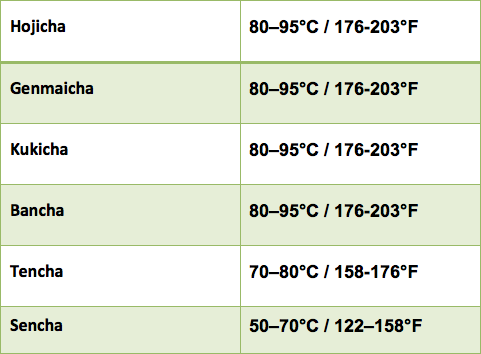
o
Leaf-Water Ratio
Another crucial factor to be aware of is the amount of leaves used. Too many leaves can overstate the original taste, while using too few can understate it. Of course, the amount of leaves needed depends on the amount of water volume:
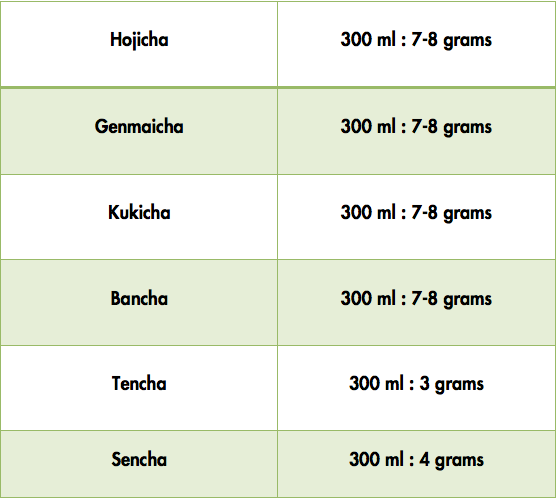
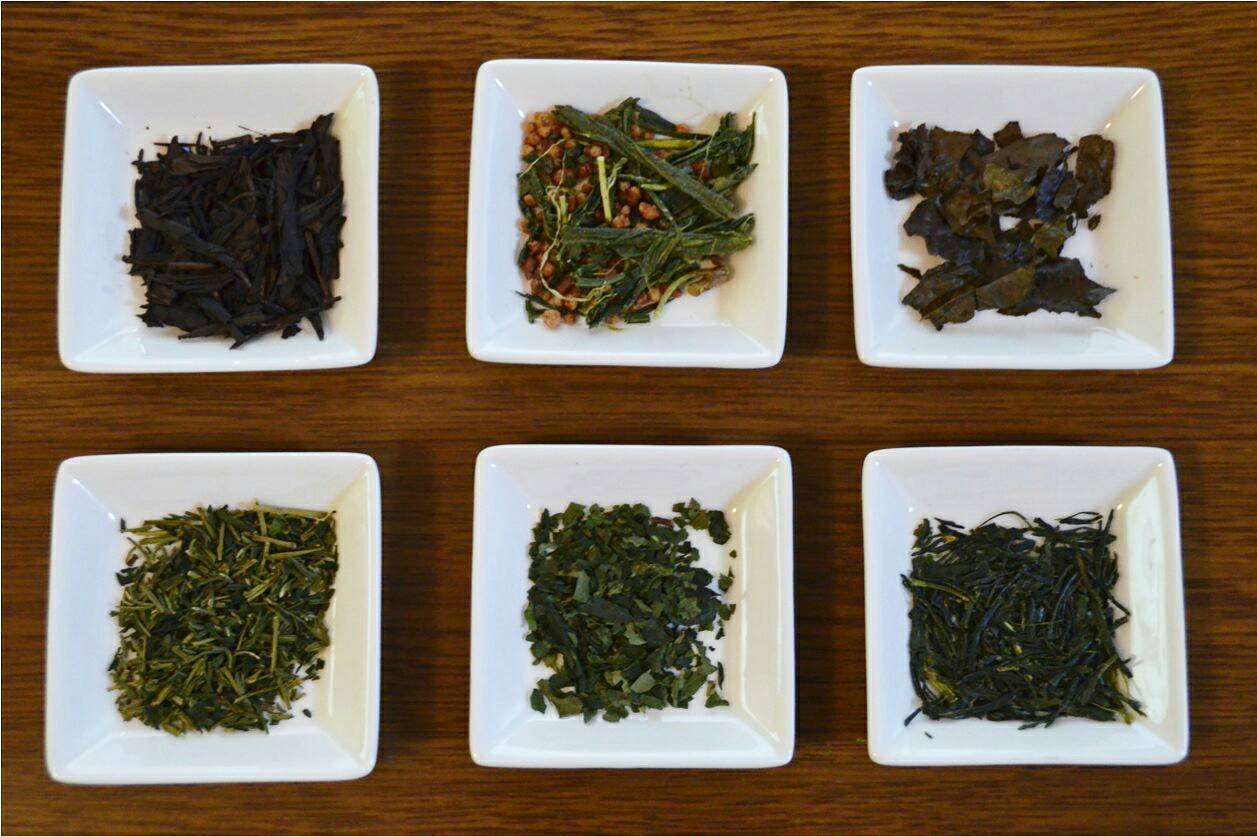
b
Steeping Time
Steeping is another factor to look out for. Interestingly, steeping a lot longer or shorter than its usual recommended time could bring its taste to a whole new level. However, this does not mean that it should be steeped at an exact duration because everyone has his or her own preference for taste. Steeping, say, 30 seconds longer or shorter might affect the flavor but not significantly. For example, steeping Hojicha for 1.5 minutes will have a stronger earthy and toasty taste compare steeping it for a minute. Therefore, it is recommended for drinkers to find their perfect tea by tasting the tea with different steeping time.
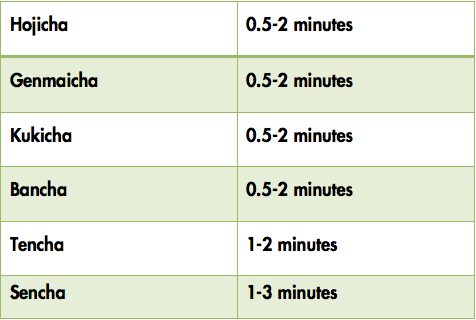
*Note: It is important to know that Kyusu and Houhin takes shorter amount of steeping time compared to the strainer method
u
Tea Utensils
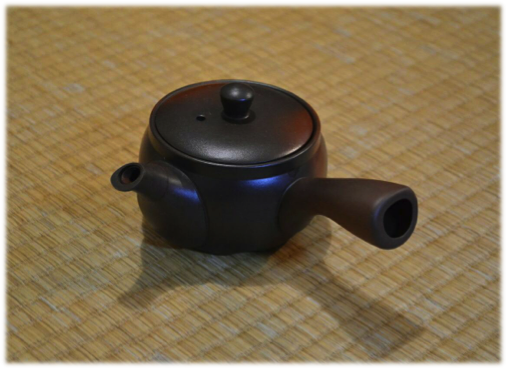
One important note is that Japanese teapots allow the leaves to fully open, exposing their full flavors. One particular teapot to look out for is Kyusu. This clay-made teapot is utilized for brewing Hojicha, Genmaicha, Kukicha, and Bancha. The clay of the pot has the capability of retaining the heat considerably and, hence, why Kyusu takes a shorter amount of steeping.
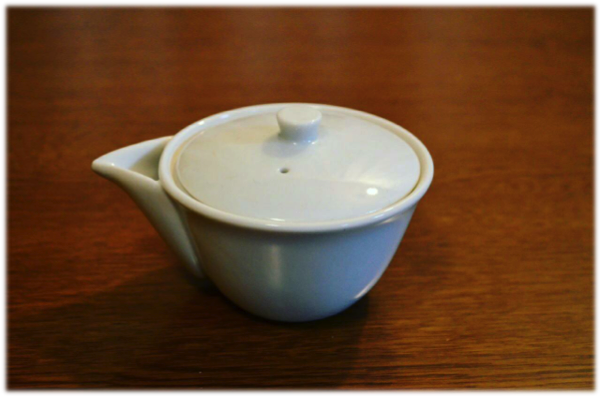
Another pot to look out is a finer teapot called Houhin. This porcelain-made pot is utilized for brewing high quality teas that needs to be brewed in lower water temperature to taste their strong umami flavor, such as Sencha and Gyokuro. Unfortunately, Houhin is less effective at high temperature because it does not have a handle and its body comes in direct contact with a brewing hand. Therefore, in order to bring out the best flavor, traditional teapots designed specifically for Japanese green tea are recommended.
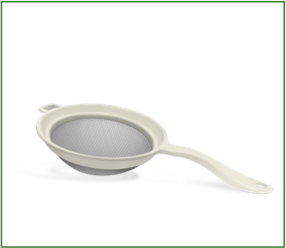
Now, it is understandable that most people will not have these Japanese teapots. Fortunately, enough, there are alternative brewing methods to bring out the flavors of the teas. Although the leaves might not open as fully, they are still flavorful enough to nearly match the outcomes of a Kyusu and Houhin. One method, that is simple to use, consist of using a tea strainer. Again, with the right water temperature and leaf-water ratio, even tea strainers can bring out a fine green tea.
b
Re-Steeping
One final thought to be considered is that green tea can be steeped 3 times before the flavor dissipates. One rule to notice is that higher water temperature is needed to re-steep, for example Sencha’s second brew should be steeped at 80°C / 176°F, while the last brew is steeped at boiling point.
u
Below are the links showing how you can brew Japanese green tea using Kyusu, Houhin, and tea strainers:
Written by: Azlan Sofyan

